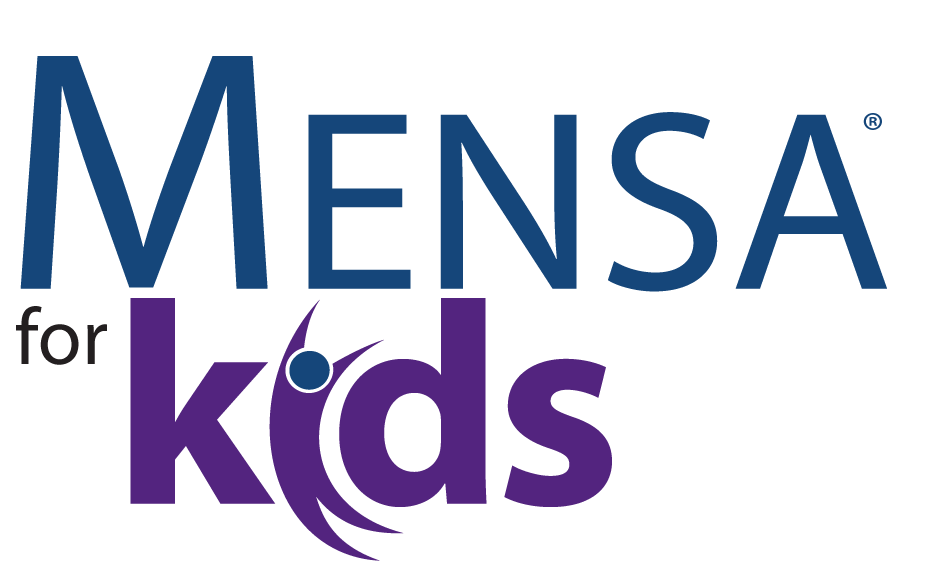

Book Review Writing Examples
Examples: learn from the efforts of others.
Learning how to write strong reviews takes time and not a little effort. Reading the reviews others have done can help you get a feel for the flow and flavor of reviews.
If I Never Forever Endeavor Review by Hayden, age 4, Southeast Michigan Mensa
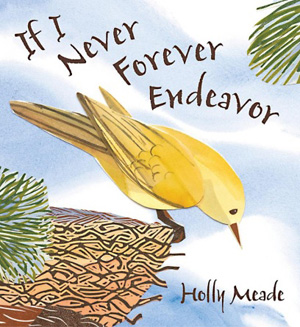
This book was about a bird who didn't yet know how to fly.
The bird has to decide if it will try to fly, but it was not sure if it wants to. The bird thought, "If I never forever endeavor" then I won't ever learn. On one wing, he worries he might fail and on the other wing he thinks of how he may succeed. He worries that if he tries, he may get lost in the world. That makes him want to stay in his nest where he's safe.
I think this book would help other children to learn that trying new things can be scary, but sometimes when we try, we can find things that make us happy too. And this book will help others know that mistakes are okay and part of learning.
My favorite part is that the bird tried and learned that she could fly. I also liked that I read this book because it gave me a chance to talk to mom about making mistakes and how I don't like making them. Then I learned they are good and part of learning.
Boys and girls who are 3 to 8 years old would like this book because it teaches about trying a new thing and how it's important to get past being scared so you can learn new things.
I give the book 5 stars since I think it's important for other children to learn about courage.
Flesh & Blood So Cheap Review by Umar B., age 8, Central New Jersy Mensa
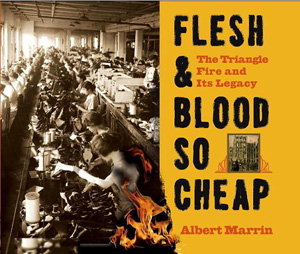
I liked this book. People who are interested in national disasters and US history as well as immigration will most probably be interested in reading this book.
Readers can gain knowledge of what it was like to work in New York City in the early 1900s. One of the things that was especially interesting was that there were no safety laws at work. Also, there was a big contrast between the rich and the poor. Some people may not like this book because it is very depressing, but it is an important event in history to remember.
This book was very well written. It has black and white photos along with descriptions of the photos. These photos give us a better idea of what people's lives were like. This book is suitable for 9-20 year olds.
I give this book 5 stars.
Galaxy Zach: Journey to Juno Review by Young Mensan Connor C., age 6, Boston Mensa
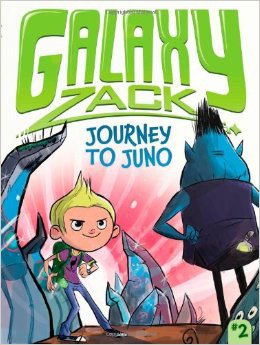
Journey To Juno is the second book of the Galaxy Zack series. It is just as good as the first one. It's awesome!
Zack joins the Sprockets Academy Explorers Club at school. They fly on a special trip to Juno, a new planet no one has ever visited. Zack gets paired up with Seth, the class bully, and that's dreadful but Zack is excited when he finds a huge galaxy gemmite. A gemmite that large had not been found in 100 years! Kids will love this book!
Boys and girls will both like it. It's an easy chapter book with pictures on every page. I love the illustrations. I think ages 6-8 would like this but younger kids would like the story being read to them.
My favorite parts are the galactic blast game (it is similar to baseball except there are robots playing), recess at Zack's school where everything is 3-D holographic images, the rainbow river in a crystal cave on Juno, and the galaxy gemmite that Zack finds on Juno. I also loved when a life-size holographic image of his Earth friend appears in Zack's room because he calls him on a hyperphone. I give this book one hundred stars! There is a "to be continued" at the end so you have to read the next book see what's in store. I can't wait to find out what happens!!!
I Capture the Castle Review by Lauren W., age 17, Mensa in Georgia
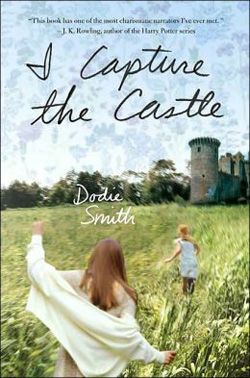
Dodie Smith's novel I Capture the Castle is a journey through the mind of a young writer as she attempts to chronicle her daily life. Seventeen-year-old Cassandra Mortmain has recently learned to speed-write, and she decides to work on her writing skills by describing the actions and conversations of those around her.
Cassandra lives in a fourteenth-century English castle with an interesting cast of characters: her beautiful older sister, Rose; her rather unsociable author father and his second wife, artist-model Topaz; Stephen, the garden boy; a cat and a bull terrier; and sometimes her brother Thomas when he is home from school. One fateful day they make the acquaintance of the Cotton family, including the two sons, and a web of tangled relationships ensues.
While I definitely recommend this book to other readers, I would recommend it to older teenagers, mainly because it will resonate better with them. The writing is tame enough that younger teens could also read it, but most of the characters are adults or on the verge of adulthood. Older readers would take the most from it since they can not only relate, but they may also better pick up on and appreciate Cassandra's sometimes subtle humor.
Over the course of the novel, Cassandra undergoes a definite transformation from child to mature young adult, even though it's only over the course of several months. I love that I could see into her mindset and read exactly what she was feeling when she thought out situations. Her thoughts flowed well and moved the book along very quickly.
Cassandra's narrative voice is wonderful. She is serious at times, but also very witty, which makes for an engaging read. It feels absolutely real, as though I'm reading someone's actual journal. Sometimes I forget that I am reading a story and not a real-life account. Her emotions and the dialogue are so genuine, and they are spot-on for a seventeen-year-old girl in her situation.
Cassandra has many wonderful insights on life, on topics ranging from writing to faith to matters of the heart. I personally have had some of the same thoughts as Cassandra, except Ms. Smith was able to put them into words.
Capture the Castle should be essential reading for aspiring writers, those looking for historical fiction or romance, or anyone who loves reading amazing classic books. Dodie Smith is an exceptional writer, and I Capture the Castle is a book that will never become obsolete.
Frankenstein's Cat Review by Zander H., age 12, Mid-America Mensa
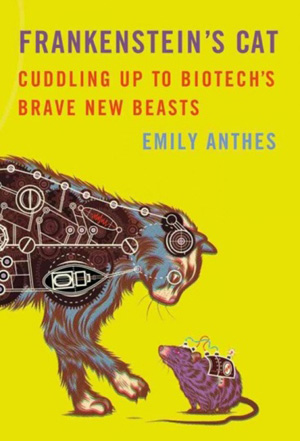
I appreciated Frankenstein's Cat for its fascinating explanation about the often baffling subject of bioengineering and its sister sciences. Emily Anthes explains the many sides of today's modern technology, such as gene modification, cloning, pharmaceutical products (from the farm), prosthesis, animal tag and tracking and gene cryogenics. This book provides a well-rounded summary of these complicated sciences without being boring or simply factual. Her real world examples take us on a journey from the farm, to the pet store and then from the pharmacy to the frozen arc.
Have you ever wondered if the neighborhood cat is spying on you? Read about Operation Acoustic Kitty and find out if this feline fantasy fiction or fact. Do you think bugs are creepy? What about a zombified cyborg beetle? Is Fido so special that you want two of him? Money can buy you an almost exact copy of your pooch BUT don't expect the same personality. Emily Anthes makes you crave more information. She makes you want to know the future of Earth's flora and fauna, as well as humanity itself.
I would highly recommend this book to anyone who desires a guide to the future of biological science and technology. Frankenstein's Cat is best read by the light of a glow-in-the-dark fish, while cuddling your favorite cloned dog and drinking a glass of genetically modified milk.
About Marsupials Review by Connor C., age 6, Boston Mensa
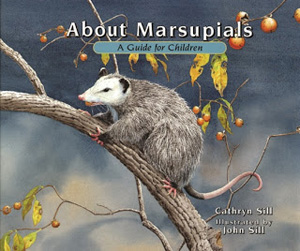
About Marsupials is the title so the book is about...marsupials, of course. It's non-fiction. I really think everyone would like the book. I think someone who likes animals would especially like to read it.
The glossary of facts in the back of About Marsupials is the most useful part. I thought the most interesting parts were that some marsupials have their pouch at their back legs and one marsupial, the Yellow-footed Rock Wallaby, is very small but can jump 13 feet wide!
Kids in the 4-8 age range would like this book. Even though it's not a story book, 4 year olds would like the few words on each page and they would love the beautiful pictures. But older kids would like it because of all the facts in the back of the book. There's a lot of information for each animal. I think boys and girls (and parents) would enjoy reading it. This book is very interesting. I give it 4 stars.
Mapping the World Review by Umar A., age 10, Central New Jersey Mensa
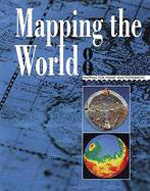
Every day, people around the world use maps. Whether it is an airplane pilot or businessman, housewife or museum group, maps have always and will continue to provide useful information for all.
Mapping the World talks about the uses of maps, as well as how to differentiate between the type of map projection and type of map.
In this series, we travel to the past and learn about historical mapmakers, from Claudius Ptolemy (who stated the idea that the Earth is at the center of the universe) to Gerardus Mercator (who created one of the most widely used map projections) and more. This series goes into tremendous detail on the cartographer's life and maps. We then journey to the present era to learn about map projections and the diverse types of maps used today. You might ask, "What is the difference between the two? They sound the same to me." No map projection is perfect, because you cannot really flatten a sphere into a rectangle. An uncolored projection could be used in many ways. We could use it for population concentration, highways, land elevation, and so many other things!
For example, we could make a topographic map of the U.S., which shows land elevation. We could make it a colorful map that shows the amount of pollution in different areas, or it could be a population map, or it could even be a map that shows the 50 states, their capitals and borders! Our last step in this amazing excursion is the near future, where we see some hypothetical solutions as to what maps will be used for. Currently, we are working on better virtual map technology.
Now, scientists have been able to put maps on phones. Back in the early 1900s, people had to lug a lot of maps around to find your way from place to place, or just keep asking for directions. Now, all the information is on a phone or global positioning system (GPS). It is amazing how much maps have changed technology and the world in this century.
The Mapping the World 8-book set goes into amazing levels of detail. It is a long read, but it gives an immense range and amount of information that you would not find in any other book or series on maps. The flowing way the chapters and books are organized makes it easy to link passages from different books in this series together. Mapping the World is a treasure box, filled with the seeds of cartography. Collect and plant them, and you soon will have the fruits of cartography, beneficial to those who want to be cartographers. Use this series to the utmost, then the fruits of mapping will be sweet for all who endeavor to succeed in cartography.
This series of lessons was designed to meet the needs of gifted children for extension beyond the standard curriculum with the greatest ease of use for the educator. The lessons may be given to the students for individual self-guided work, or they may be taught in a classroom or a home-school setting. Assessment strategies and rubrics are included at the end of each section. The rubrics often include a column for "scholar points," which are invitations for students to extend their efforts beyond that which is required, incorporating creativity or higher level technical skills.

How to Write a Book Review: The Ultimate Guide
WHAT IS A BOOK REVIEW?

Traditionally, book reviews are evaluations of a recently published book in any genre. Usually, around the 500 to 700-word mark, they briefly describe a text’s main elements while appraising the work’s strengths and weaknesses. Published book reviews can appear in newspapers, magazines, and academic journals. They provide the reader with an overview of the book itself and indicate whether or not the reviewer would recommend the book to the reader.
WHAT IS THE PURPOSE OF A BOOK REVIEW?
There was a time when book reviews were a regular appearance in every quality newspaper and many periodicals. They were essential elements in whether or not a book would sell well. A review from a heavyweight critic could often be the deciding factor in whether a book became a bestseller or a damp squib. In the last few decades, however, the book review’s influence has waned considerably, with many potential book buyers preferring to consult customer reviews on Amazon, or sites like Goodreads, before buying. As a result, book review’s appearance in newspapers, journals, and digital media has become less frequent.
WHY BOTHER TEACHING STUDENTS TO WRITE BOOK REVIEWS AT ALL?
Even in the heyday of the book review’s influence, few students who learned the craft of writing a book review became literary critics! The real value of crafting a well-written book review for a student does not lie in their ability to impact book sales. Understanding how to produce a well-written book review helps students to:
● Engage critically with a text
● Critically evaluate a text
● Respond personally to a range of different writing genres
● Improve their own reading, writing, and thinking skills.
Not to Be Confused with a Book Report!
WHAT’S THE DIFFERENCE BETWEEN A BOOK REVIEW AND A BOOK REPORT?
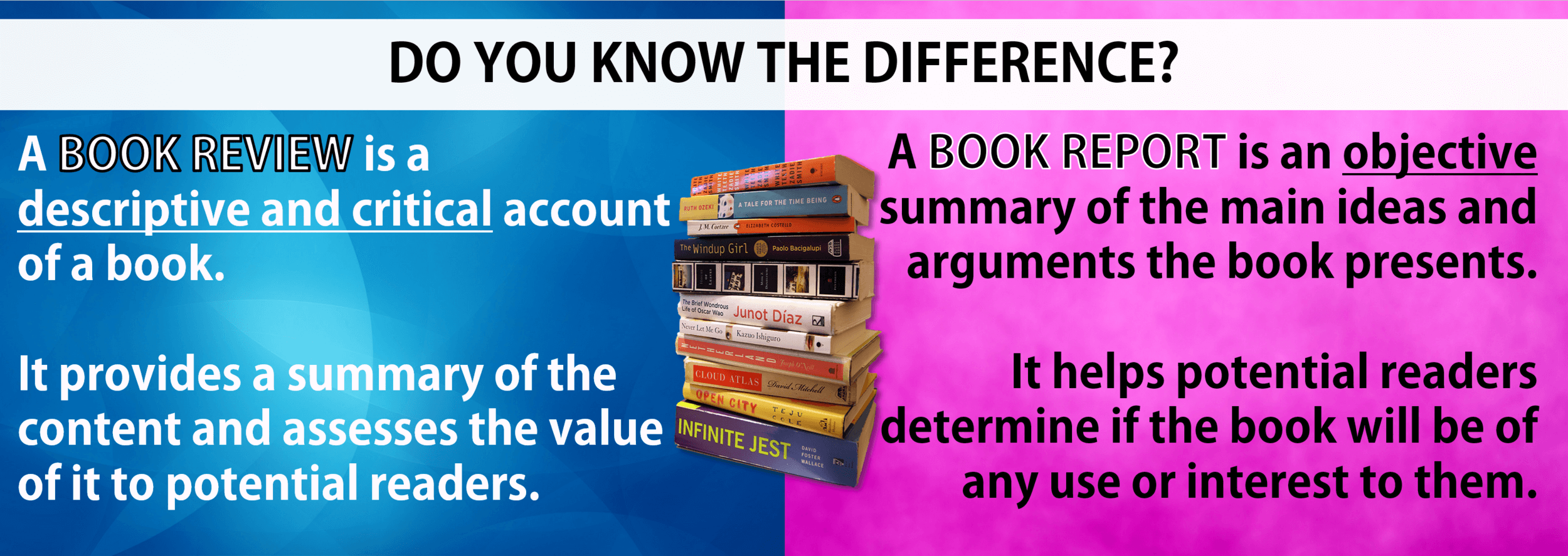
While the terms are often used interchangeably, there are clear differences in both the purpose and the format of the two genres. Generally speaking, book reports aim to give a more detailed outline of what occurs in a book. A book report on a work of fiction will tend to give a comprehensive account of the characters, major plot lines, and themes in the book. Book reports are usually written around the K-12 age range, while book reviews tend not to be undertaken by those at the younger end of this age range due to the need for the higher-level critical skills required in writing them. At their highest expression, book reviews are written at the college level and by professional critics.
Learn how to write a book review step by step with our complete guide for students and teachers by familiarizing yourself with the structure and features.
BOOK REVIEW STRUCTURE
ANALYZE Evaluate the book with a critical mind.
THOROUGHNESS The whole is greater than the sum of all its parts. Review the book as a WHOLE.
COMPARE Where appropriate compare to similar texts and genres.
THUMBS UP OR DOWN? You are going to have to inevitably recommend or reject this book to potential readers.
BE CONSISTENT Take a stance and stick with it throughout your review.
FEATURES OF A BOOK REVIEW
PAST TENSE You are writing about a book you have already read.
EMOTIVE LANGUAGE Whatever your stance or opinion be passionate about it. Your audience will thank you for it.
VOICE Both active and passive voice are used in recounts.
A COMPLETE UNIT ON REVIEW AND ANALYSIS OF TEXTS
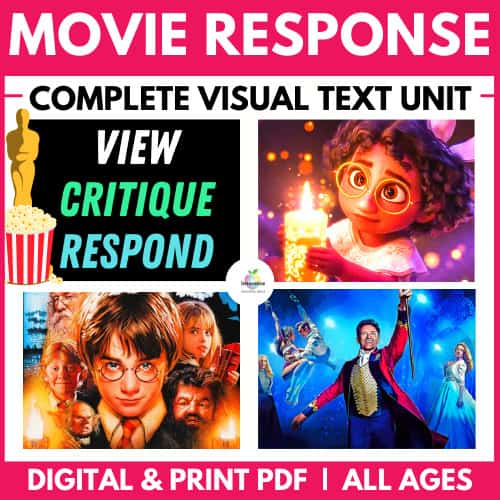
⭐ Make MOVIES A MEANINGFUL PART OF YOUR CURRICULUM with this engaging collection of tasks and tools your students will love. ⭐ All the hard work is done for you with NO PREPARATION REQUIRED.
This collection of 21 INDEPENDENT TASKS and GRAPHIC ORGANIZERS takes students beyond the hype, special effects and trailers to look at visual literacy from several perspectives offering DEEP LEARNING OPPORTUNITIES by watching a SERIES, DOCUMENTARY, FILM, and even VIDEO GAMES.
ELEMENTS OF A BOOK REVIEW
As with any of the writing genres we teach our students, a book review can be helpfully explained in terms of criteria. While there is much to the ‘art’ of writing, there is also, thankfully, a lot of the nuts and bolts that can be listed too. Have students consider the following elements before writing:
● Title: Often, the title of the book review will correspond to the title of the text itself, but there may also be some examination of the title’s relevance. How does it fit into the purpose of the work as a whole? Does it convey a message or reveal larger themes explored within the work?
● Author: Within the book review, there may be some discussion of who the author is and what they have written before, especially if it relates to the current work being reviewed. There may be some mention of the author’s style and what they are best known for. If the author has received any awards or prizes, this may also be mentioned within the body of the review.
● Genre: A book review will identify the genre that the book belongs to, whether fiction or nonfiction, poetry, romance, science-fiction, history etc. The genre will likely tie in, too with who the intended audience for the book is and what the overall purpose of the work is.
● Book Jacket / Cover: Often, a book’s cover will contain artwork that is worthy of comment. It may contain interesting details related to the text that contribute to, or detract from, the work as a whole.
● Structure: The book’s structure will often be heavily informed by its genre. Have students examine how the book is organized before writing their review. Does it contain a preface from a guest editor, for example? Is it written in sections or chapters? Does it have a table of contents, index, glossary etc.? While all these details may not make it into the review itself, looking at how the book is structured may reveal some interesting aspects.
● Publisher and Price: A book review will usually contain details of who publishes the book and its cost. A review will often provide details of where the book is available too.

BOOK REVIEW KEY ELEMENTS
As students read and engage with the work they will review, they will develop a sense of the shape their review will take. This will begin with the summary. Encourage students to take notes during the reading of the work that will help them in writing the summary that will form an essential part of their review. Aspects of the book they may wish to take notes on in a work of fiction may include:
● Characters: Who are the main characters? What are their motivations? Are they convincingly drawn? Or are they empathetic characters?
● Themes: What are the main themes of the work? Are there recurring motifs in the work? Is the exploration of the themes deep or surface only?
● Style: What are the key aspects of the writer’s style? How does it fit into the wider literary world?
● Plot: What is the story’s main catalyst? What happens in the rising action? What are the story’s subplots?
A book review will generally begin with a short summary of the work itself. However, it is important not to give too much away, remind students – no spoilers, please! For nonfiction works, this may be a summary of the main arguments of the work, again, without giving too much detail away. In a work of fiction, a book review will often summarise up to the rising action of the piece without going beyond to reveal too much!
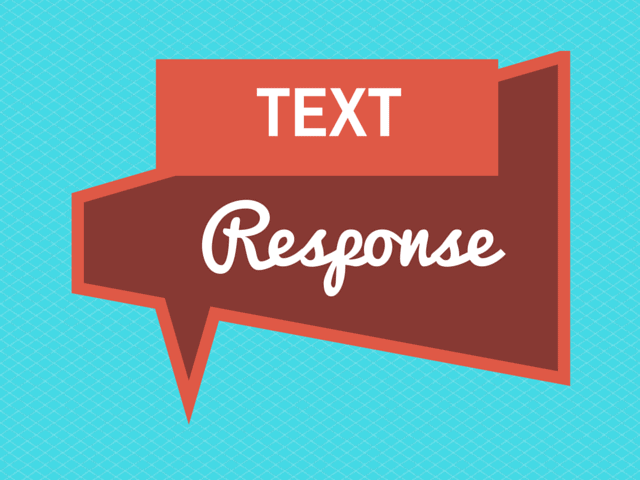
The summary should also provide some orientation for the reader. Given the nature of the purpose of a review, it is important that students’ consider their intended audience in the writing of their review. Readers will most likely not have read the book in question and will require some orientation. This is often achieved through introductions to the main characters, themes, primary arguments etc. This will help the reader to gauge whether or not the book is of interest to them.
Once your student has summarized the work, it is time to ‘review’ in earnest. At this point, the student should begin to detail their own opinion of the book. To do this well they should:
i. Make It Personal
Often when teaching essay writing we will talk to our students about the importance of climbing up and down the ladder of abstraction. Just as it is helpful to explore large, more abstract concepts in an essay by bringing it down to Earth, in a book review, it is important that students can relate the characters, themes, ideas etc to their own lives.
Book reviews are meant to be subjective. They are opinion pieces, and opinions grow out of our experiences of life. Encourage students to link the work they are writing about to their own personal life within the body of the review. By making this personal connection to the work, students contextualize their opinions for the readers and help them to understand whether the book will be of interest to them or not in the process.
ii. Make It Universal
Just as it is important to climb down the ladder of abstraction to show how the work relates to individual life, it is important to climb upwards on the ladder too. Students should endeavor to show how the ideas explored in the book relate to the wider world. The may be in the form of the universality of the underlying themes in a work of fiction or, for example, the international implications for arguments expressed in a work of nonfiction.
iii. Support Opinions with Evidence
A book review is a subjective piece of writing by its very nature. However, just because it is subjective does not mean that opinions do not need to be justified. Make sure students understand how to back up their opinions with various forms of evidence, for example, quotations, statistics, and the use of primary and secondary sources.
EDIT AND REVISE YOUR BOOK REVIEW
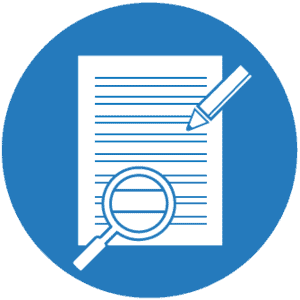
As with any writing genre, encourage students to polish things up with review and revision at the end. Encourage them to proofread and check for accurate spelling throughout, with particular attention to the author’s name, character names, publisher etc.
It is good practice too for students to double-check their use of evidence. Are statements supported? Are the statistics used correctly? Are the quotations from the text accurate? Mistakes such as these uncorrected can do great damage to the value of a book review as they can undermine the reader’s confidence in the writer’s judgement.
The discipline of writing book reviews offers students opportunities to develop their writing skills and exercise their critical faculties. Book reviews can be valuable standalone activities or serve as a part of a series of activities engaging with a central text. They can also serve as an effective springboard into later discussion work based on the ideas and issues explored in a particular book. Though the book review does not hold the sway it once did in the mind’s of the reading public, it still serves as an effective teaching tool in our classrooms today.

Teaching Resources
Use our resources and tools to improve your student’s writing skills through proven teaching strategies.
BOOK REVIEW GRAPHIC ORGANIZER (TEMPLATE)

101 DIGITAL & PRINT GRAPHIC ORGANIZERS FOR ALL CURRICULUM AREAS
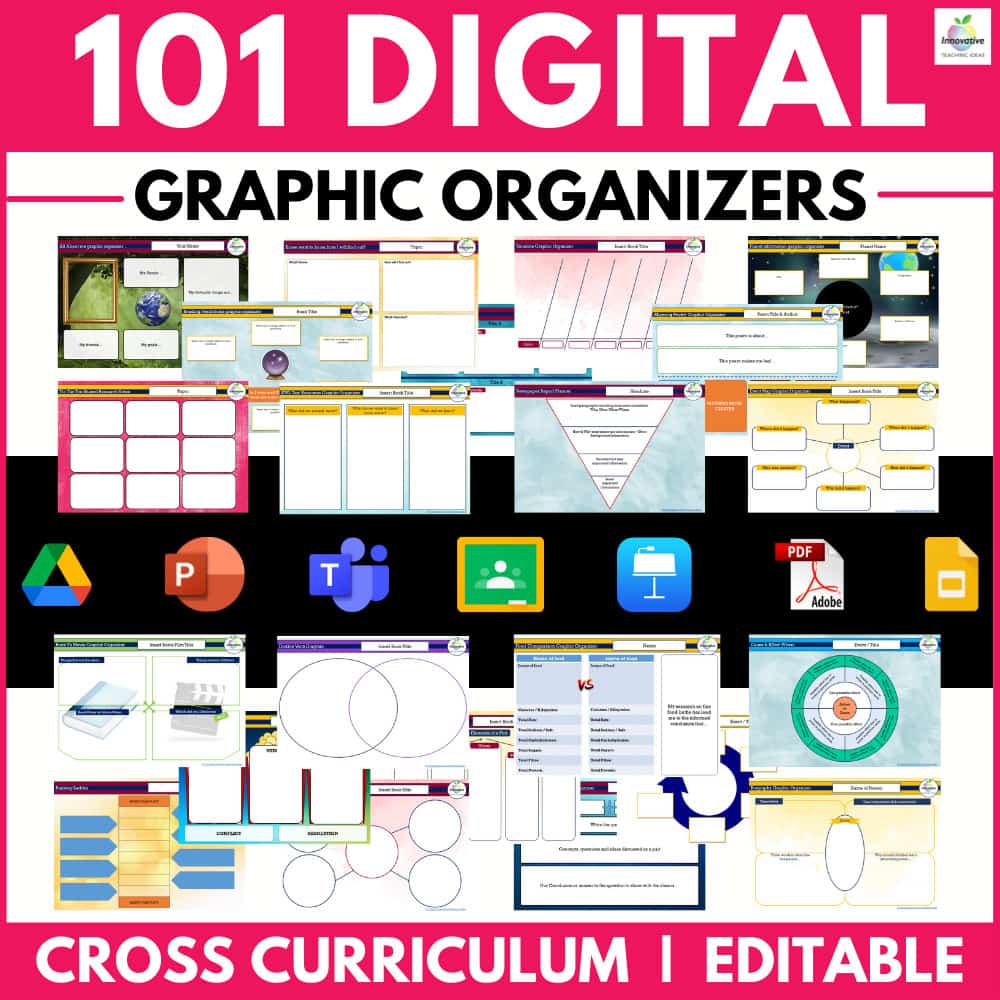
Introduce your students to 21st-century learning with this GROWING BUNDLE OF 101 EDITABLE & PRINTABLE GRAPHIC ORGANIZERS. ✌ NO PREP REQUIRED!!! ✌ Go paperless, and let your students express their knowledge and creativity through the power of technology and collaboration inside and outside the classroom with ease.
Whilst you don’t have to have a 1:1 or BYOD classroom to benefit from this bundle, it has been purpose-built to deliver through platforms such as ✔ GOOGLE CLASSROOM, ✔ OFFICE 365, ✔ or any CLOUD-BASED LEARNING PLATFORM.
Book and Movie review writing examples (Student Writing Samples)
Below are a collection of student writing samples of book reviews. Click on the image to enlarge and explore them in greater detail. Please take a moment to both read the movie or book review in detail but also the teacher and student guides which highlight some of the key elements of writing a text review
Please understand these student writing samples are not intended to be perfect examples for each age or grade level but a piece of writing for students and teachers to explore together to critically analyze to improve student writing skills and deepen their understanding of book review writing.
We would recommend reading the example either a year above and below, as well as the grade you are currently working with to gain a broader appreciation of this text type .

BOOK REVIEW VIDEO TUTORIALS
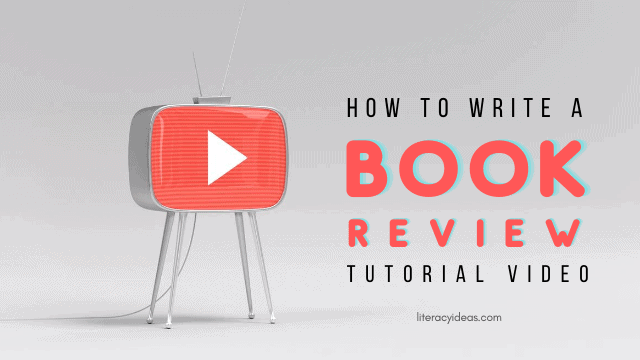
OTHER GREAT ARTICLES RELATED TO BOOK REVIEWS
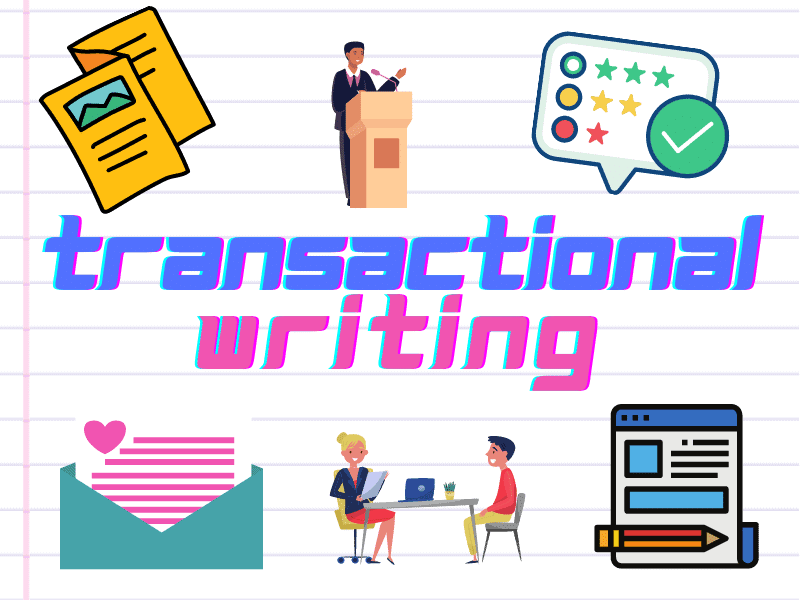
Transactional Writing
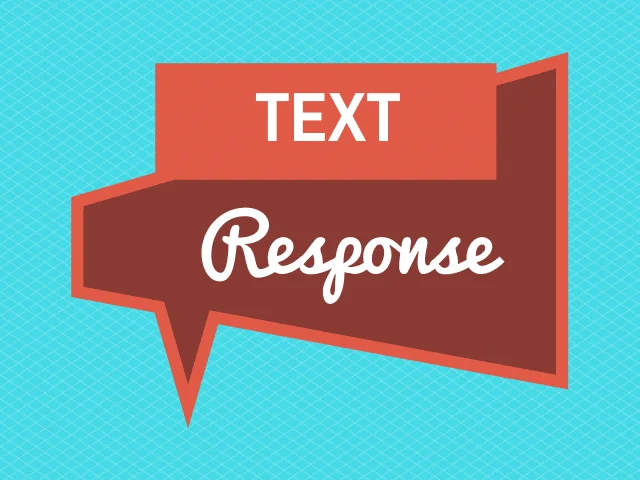
How to write a text response
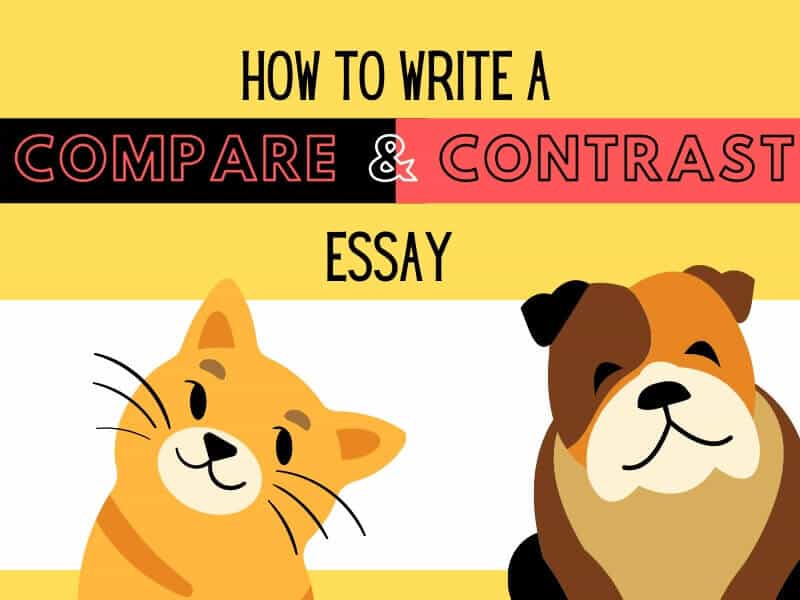
How to Write a Compare and Contrast Essay
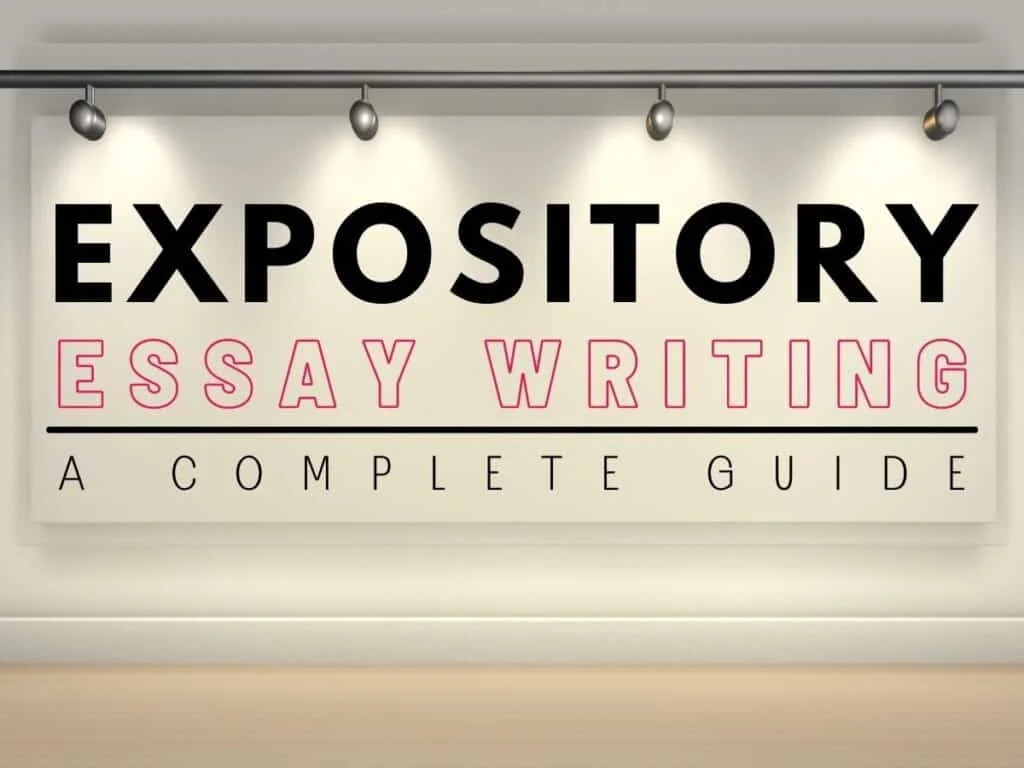
How to Write Excellent Expository Essays
Purdue Online Writing Lab Purdue OWL® College of Liberal Arts
Writing a Book Review

Welcome to the Purdue OWL
This page is brought to you by the OWL at Purdue University. When printing this page, you must include the entire legal notice.
Copyright ©1995-2018 by The Writing Lab & The OWL at Purdue and Purdue University. All rights reserved. This material may not be published, reproduced, broadcast, rewritten, or redistributed without permission. Use of this site constitutes acceptance of our terms and conditions of fair use.
Book reviews typically evaluate recently-written works. They offer a brief description of the text’s key points and often provide a short appraisal of the strengths and weaknesses of the work.
Readers sometimes confuse book reviews with book reports, but the two are not identical. Book reports commonly describe what happens in a work; their focus is primarily on giving an account of the major plot, characters, and/or main idea of the work. Most often, book reports are a K-12 assignment and range from 250 to 500 words. If you are looking to write a book report, please see the OWL resource, Writing a Book Report.
By contrast, book reviews are most often a college assignment, but they also appear in many professional works: magazines, newspapers, and academic journals. They typically range from 500-750 words, but may be longer or shorter. A book review gives readers a sneak peek at what a book is like, whether or not the reviewer enjoyed it, and details on purchasing the book.

Before You Read
Before you begin to read, consider the elements you will need to included in your review. The following items may help:
- Author: Who is the author? What else has s/he written? Has this author won any awards? What is the author’s typical style?
- Genre: What type of book is this: fiction, nonfiction, romance, poetry, youth fiction, etc.? Who is the intended audience for this work? What is the purpose of the work?
- Title: Where does the title fit in? How is it applied in the work? Does it adequately encapsulate the message of the text? Is it interesting? Uninteresting?
- Preface/Introduction/Table of Contents: Does the author provide any revealing information about the text in the preface/introduction? Does a “guest author” provide the introduction? What judgments or preconceptions do the author and/or “guest author” provide? How is the book arranged: sections, chapters?
- Book Jacket/Cover/Printing: Book jackets are like mini-reviews. Does the book jacket provide any interesting details or spark your interest in some way? Are there pictures, maps, or graphs? Do the binding, page cut, or typescript contribute or take away from the work?
As You Read
As you read, determine how you will structure the summary portion or background structure of your review. Be ready to take notes on the book’s key points, characters, and/or themes.
- Characters: Are there characters in the work? Who are the principal characters? How do they affect the story? Do you empathize with them?
- Themes/Motifs/Style: What themes or motifs stand out? How do they contribute to the work? Are they effective or not? How would you describe this author’s particular style? Is it accessible to all readers or just some?
- Argument: How is the work’s argument set up? What support does the author give for her/findings? Does the work fulfill its purpose/support its argument?
- Key Ideas: What is the main idea of the work? What makes it good, different, or groundbreaking?
- Quotes: What quotes stand out? How can you demonstrate the author’s talent or the feel of the book through a quote?
When You Are Ready to Write
Begin with a short summary or background of the work, but do not give too much away. Many reviews limit themselves only to the first couple of chapters or lead the reader up to the rising action of the work. Reviewers of nonfiction texts will provide the basic idea of the book’s argument without too much detailed.
The final portion of your review will detail your opinion of the work. When you are ready to begin your review, consider the following:
- Establish a Background, Remember your Audience: Remember that your audience has not read the work; with this in mind, be sure to introduce characters and principles carefully and deliberately. What kind of summary can you provide of the main points or main characters that will help your readers gauge their interest? Does the author’s text adequately reach the intended audience? Will some readers be lost or find the text too easy?
- Minor principles/characters: Deal only with the most pressing issues in the book. You will not be able to cover every character or idea. What principles/characters did you agree or disagree with? What other things might the author have researched or considered?
- Organize: The purpose of the review is to critically evaluate the text, not just inform the readers about it. Leave plenty room for your evaluation by ensuring that your summary is brief. Determine what kind of balance to strike between your summary information and your evaluation. If you are writing your review for a class, ask your instructor. Often the ratio is half and half.
- Your Evaluation: Choose one or a few points to discuss about the book. What worked well for you? How does this work compare with others by the same author or other books in the same genre? What major themes, motifs, or terms does the book introduce, and how effective are they? Did the book appeal to you on an emotional or logical way?
- Publisher/Price: Most book reviews include the publisher and price of the book at the end of the article. Some reviews also include the year published and ISBN.
When making the final touches to your review, carefully verify the following:
- Double-check the spelling of the author name(s), character names, special terms, and publisher.
- Try to read from the vantage point of your audience. Is there too much/enough summary? Does your argument about the text make sense?
- Should you include direct quotes from the reading? Do they help support your arguments? Double-check your quotes for accuracy.
- College Essay
- Argumentative Essay
- Expository Essay
- Narrative Essay
- Descriptive Essay
- Scholarship Essay
- Admission Essay
- Reflective Essay
- Nursing Essay
- Economics Essay
Assignments
- Term Papers
- Research Papers
- Case Studies
- Dissertation
- Presentation
- Editing Help
- Cheap Essay Writing
- How to Order
Book Review Writing
Book Review Format
A Complete Book Review Format Guide For Students

People also read
How to Write a Book Review - A Step By Step Guide
Book Review Examples to Help You Get Started
Ever get stuck when trying to write a book review and wonder how to organize it? You're not alone! It's more than just talking about the story.
You need to figure out what the author is really saying and share your thoughts in a clear way.
But don't worry - we're here to help. This guide is all about making the formatting of your book review super easy. Whether you're just starting out or want to improve, we've got you covered. We'll break down the steps, give you examples, and share tips to make your review stand out.
So, let's make writing a book review less stressful!
- 1. How to Format a Book Review?
- 2. Book Review Template
- 3. Book Review Format Examples
- 4. Book Review Writing Tips
How to Format a Book Review?
The format of a book review allows students to provide an in-depth analysis of the book. However, it all depends on how you are writing your book review, but there are some general guidelines that you need to follow.
If you follow the proper guidelines, it will show that you have understood the main theme and ideas of the book.
Introduction
Begin your book review with a captivating introduction.
Provide the essential details, such as the book's title, author, and any other relevant information. Use this section to create intrigue and give your readers a sense of what to expect in your review.
Overview of the Book
Offer a concise overview of the book's main theme.
Highlight the key elements of the plot without revealing spoilers. This section serves as a teaser, drawing readers into the world of the book and setting the stage for your analysis.
Analysis of Characters and Setting
Delve into the characters and setting to provide a deeper understanding.
Describe the main characters objectively, discussing their roles, traits, and significance to the story. Paint a vivid picture of the setting, helping readers visualize the environment in which the narrative unfolds.
Plot Breakdown
Break down the plot by addressing crucial questions that delve into the heart of the story.
Explore the goals of each character, identifying the main conflicts that drive the narrative. Discuss whether these conflicts are resolved and how they contribute to the overall arc of the plot.
Author's Message
Examine the author's underlying message.
Discuss the themes and ideas conveyed throughout the book. Assess whether the author successfully communicates their intended message and how well it resonates with the reader
Final Assessment
Provide your overall assessment of the book, combining insights from the previous steps.
Support your opinions with specific examples from the text, highlighting key moments or passages that impacted your understanding. This is the section where your unique perspective as a reader shines through.
Summarize the key points discussed in your review, emphasizing the most noteworthy aspects.
Offer a final thought or recommendation, guiding readers on whether the book is worth their time. Keep your conclusion concise and impactful, leaving a lasting impression that encourages further exploration or discussion.
By carefully following these steps, you can structure your book review in a way that engages readers, provides valuable insights, and captures the essence of the book.
Book Review Template
A book review is the first impression of the whole story and the narration of the book. A typical book review template includes an introduction, body, and conclusion. Here is a sample book review format:
Here is a perfect template for you to make the most interesting textbook review format. You can use this template to write a book review:
Book Review Format Examples
Writing a book review is a very common writing assignment. Teachers might ask you to write a review of a book you have read recently.
In order to illustrate what a book review is, we have provided you with interesting critical book review examples for your reference.
APA Book Review Format Example
For writing a book review in APA format, refer to the following book review APA format example. This will help you learn how to use APA writing guidelines and referencing style.
Book Review Format for Students
Here are some book review format examples that middle and high school students can use to learn about this type of writing.
Book Review Format for Grade 2
Book Review Format for Class 10
Book Review Format for College Students
Here is a Turabian book review format for college students to learn from.
Academic Book Review Format
Need more examples? Check out these book review examples to get a better idea of formatting!
Book Review Writing Tips
Here are some expert writing tips that you should keep in mind while writing a book format:
- Keep the introduction brief: Many people don't like to read long introductions for essays. This can lower your grade. Keep the introduction short so people will read it all.
- Prefer reviews of fictional books: It is not necessary to write book reviews about fiction books, but it can be more effective than writing nonfiction books.
- Don’t compare: Do not compare your chosen novel to other books you have read in the past. Comparing them will only confuse the reader.
- Opinion is important: When writing book reviews, it is often encouraged to include your own point of view. Add whether you recommend the book or not.
- Take help from templates: Using a book review template can help a student understand the required writing style.
- Criticize if you must: Usually, you don't need to give your opinion in academic papers below Ph.D. level. However, with book reviews, it's different. You can criticize the writing, story, or characters if there’s a need.
- Be positive while reviewing: When giving feedback, make sure to include a mix of positive and negative comments while remaining majorly positive.
- Appreciation won’t hurt: If you enjoyed reading the book, say so. This will encourage the potential readers and the author as well.
Now that you know how to format your book review well, you can start writing easily.
But if you ever hit a roadblock, don't worry. Our write my book report service is here for you.
Our expert writers, well-versed in crafting and formatting book reviews, guarantee 100% original and top-quality content.
So, place your order today, and let our professionals take care of your work.
You can also tell us to ' do my paper ' at any time of the day, and we'll be here to assist you as best as we can.
Your success is what matters the most to us!

Write Essay Within 60 Seconds!

Cathy has been been working as an author on our platform for over five years now. She has a Masters degree in mass communication and is well-versed in the art of writing. Cathy is a professional who takes her work seriously and is widely appreciated by clients for her excellent writing skills.
Struggling With Your Paper?
Get a custom paper written at
With a FREE Turnitin report, and a 100% money-back guarantee
LIMITED TIME ONLY!
Keep reading

OFFER EXPIRES SOON!

Join Discovery, the new community for book lovers
Trust book recommendations from real people, not robots 🤓
Blog – Posted on Thursday, Nov 11
The only book review templates you'll ever need.

Whether you’re trying to become a book reviewer , writing a book report for school, or analyzing a book, it’s nice to follow a book review template to make sure that your thoughts are clearly presented.
A quality template provides guidance to keep your mind sharp and your thoughts organized so that you can write the best book review possible. On Reedsy Discovery , we read and share a lot of book reviews, which helps us develop quite a clear idea what makes up a good one. With that in mind, we’ve put together some trustworthy book review templates that you can download, along with a quick run-through of all the parts that make up an outstanding review — all in this post!
Pro-tip : But wait! How are you sure if you should become a book reviewer in the first place? If you're on the fence, or curious about your match with a book reviewing career, take our quick quiz:
Should you become a book reviewer?
Find out the answer. Takes 30 seconds!
Book review templates for every type of review
With the rapid growth of the book community on Instagram, Youtube, and even TikTok, the world of book commentary has evolved far beyond your classic review. There are now many ways you can structure a book review. Some popular formats include:
- Book reports — often done for school assignments;
- Commentary articles — think in-depth reviews in magazines and newspapers;
- Book blog reviews — short personal essays about the book; and
- Instagram reviews — one or two-paragraph reviews captioned under a nice photo.
But while the text in all these review styles can be organized in different ways, there are certain boxes that all good book reviews tick. So, instead of giving you various templates to use for different occasions, we’ve condensed it down to just two book review templates (one for fiction and one for nonfiction) that can guide your thoughts and help you nail just about any review.

⭐ Download our free fiction book review template
⭐ Download our free nonfiction book review template
All you need to do is answer the questions in the template regarding the book you’re reading and you’ve got the content of your review covered. Once that’s done, you can easily put this content into its appropriate format.
Now, if you’re curious about what constitutes a good book review template, we’ll explain it in the following section!
Elements of a book review template
Say you want to build your own book review template, or you want to customize our templates — here are the elements you’ll want to consider.
We’ve divided our breakdown of the elements into two categories: the essentials and the fun additions that’ll add some color to your book reviews.
What are the three main parts of a book review?
We covered this in detail (with the help of some stellar examples) in our post on how to write a book review , but basically, these are the three crucial elements you should know:
The summary covers the premise of the book and its main theme, so readers are able to understand what you’re referring to in the rest of your review. This means that, if a person hasn’t read the book, they can go through the summary to get a quick idea of what it’s about. (As such, there should be no spoilers!)
The analysis is where, if it’s a fiction book, you talk more about the book, its plot, theme, and characters. If it’s nonfiction, you have to consider whether the book effectively achieves what it set out to do.
The recommendation is where your personal opinion comes in the strongest, and you give a verdict as to who you think might enjoy this book.
You can choose to be brief or detailed, depending on the kind of review you’re writing, but you should always aim to cover these three points. If you’re needing some inspiration, check out these 17 book review examples as seen in magazines, blogs, and review communities like Reedsy Discovery for a little variation.
Which review community should you join?
Find out which review community is best for your style. Takes 30 seconds!
Which additional details can you include?
Once you’ve nailed down the basics, you can jazz things up a little and add some personal flavor to your book review by considering some of these elements:
- A star-rating (the default is five stars but you can create your own scales);
- A bullet-point pros and cons list;
- Your favorite quotation from the book;
- Commentary on the format you read (i.e., ebook, print, or audiobook);
- Fun facts about the book or author;
- Other titles you think are similar.
This is where you can really be creative and tailor your review to suit your purpose and audience. A formal review written for a magazine, for instance, will likely benefit from contextual information about the author and the book, along with some comment on how that might have affected the reading (or even writing) process.
Meanwhile, if you’re reviewing a book on social media, you might find bullet points more effective at capturing the fleeting attention of Internet users. You can also make videos, take creative pictures, or even add your own illustrations for more personal touches. The floor is yours at this point, so go ahead and take the spotlight!
That said, we hope that our templates can provide you with a strong foundation for even your most adventurous reviews. And if you’re interested in writing editorial reviews for up-and-coming indie titles, register as a reviewer on Reedsy Discovery !
Continue reading
More posts from across the blog.
The Best Books of 2018
Where oh where did 2018 go? It seems like only yesterday we were cracking open our literary-themed planners of choice and writing down our list of 2018 resolutions — at the top of which, in big bolded letters, was the phrase “Read more!” ...
Guide to Southern Gothic: 10 Dark Must-Reads
Southern Gothic is a literary style that takes gothic themes and places them
40+ Best Book Review Podcasts of 2024
You might have heard about Bookstagram, BookTok, and BookTube, but have you found your favorite bookish podcast yet? We’ve scoured the airwaves and curated more than 40 of the best podcasts that entertain, inspire, review, and — most importantly — recommend the best books for ...
Heard about Reedsy Discovery?
Trust real people, not robots, to give you book recommendations.
Or sign up with an
Or sign up with your social account
- Submit your book
- Reviewer directory

Writing a book review?
Use our free book review template to make sure you don't leave anything out.

IMAGES
VIDEO
COMMENTS
Book Review Examples For High School Students. Below, you can also find some good book review examples for high school students. These real-life examples can help you get a clear understanding of the standard book review format that you should follow.
We've scoured the literary realms and compiled 17 good book review examples to give you a headstart as you're writing your own book review.
Learning how to write strong reviews takes time and not a little effort. Reading the reviews others have done can help you get a feel for the flow and flavor of reviews. This book was about a bird who didn't yet know how to fly. The bird has to decide if it will try to fly, but it was not sure if it wants to.
Writing opinions and criticisms about books is not easy. Here are the best book review templates are very useful for kids, middle school and high school.
At their highest expression, book reviews are written at the college level and by professional critics. Learn how to write a book review step by step with our complete guide for students and teachers by familiarizing yourself with the structure and features.
Book reviews typically evaluate recently-written works. They offer a brief description of the text’s key points and often provide a short appraisal of the strengths and weaknesses of the work. Readers sometimes confuse book reviews with book reports, but the two are not identical.
Here are some book review format examples that middle and high school students can use to learn about this type of writing.
This handout from Angela Bunyi's Writing Book Reviews: Online and Beyond! lesson plan includes multiple book reviews for The Van Gogh Café by Cynthia Rylant, My Life in Dog Years by Gary Paulsen, and The Watsons Go to Birmingham by Christopher Paul Curtis . Use these as samples to help students write their own book reviews. Created Date
A book review is an honest reaction to a book that generally analyzes its themes, plotline, characters, dialogue, and use of literary devices (if applicable). Book reviews are written in the first person and combine their authors’ opinions with insights about the book.
Whether you’re trying to become a book reviewer, writing a book report for school, or analyzing a book, it’s nice to follow a book review template to make sure that your thoughts are clearly presented.